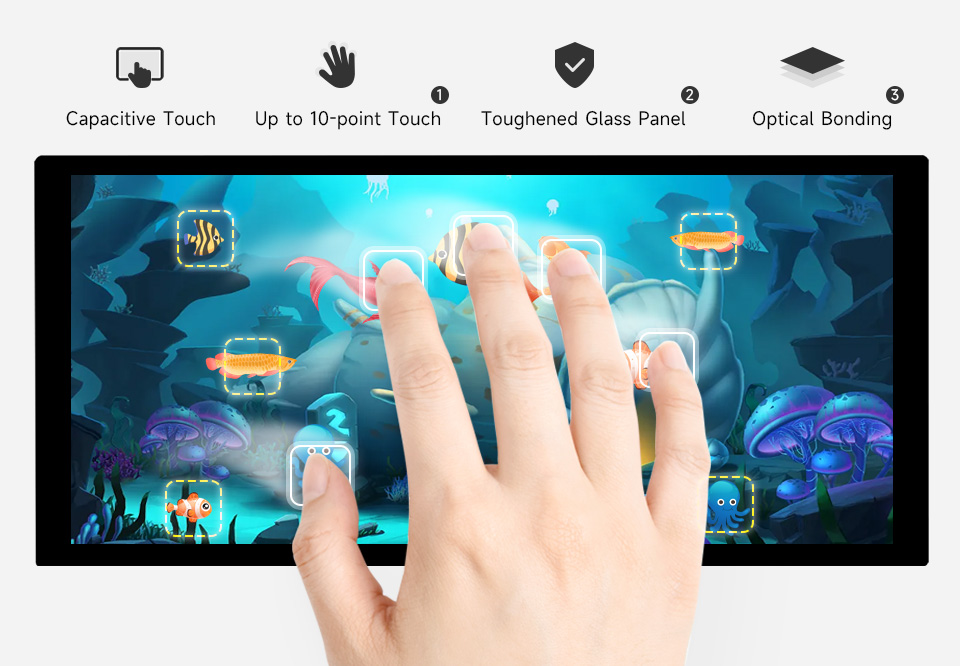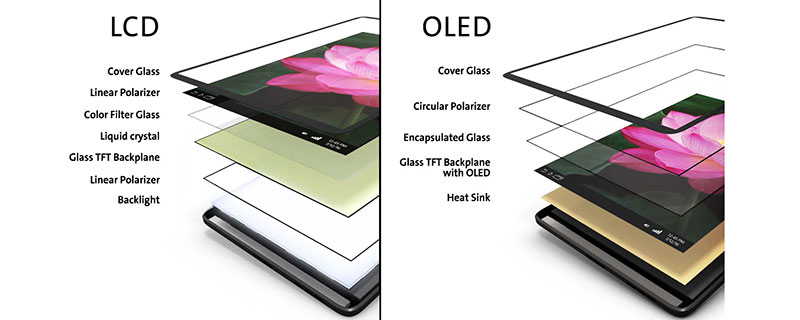There are many LCD factories capable of producing LCD screen technology, among which LG Display, BOE, Samsung, AUO, Sharp, TIANMA etc. are all excellent representatives. They have accumulated many years of experience in production technology, and each has different core competitiveness. Production The LCD screens produced have a high market share and are mainstream suppliers. Today, we will introduce in detail who are the LCD screen supplier?
1. BOE
BOE is a typical representative of China LCD screen supplier and the largest display panel manufacturer in China. At present, the shipment volume of LCD screens produced by BOE in the fields of notebook computers and mobile phones has reached the first place in the world. It continues to produce LCD screens for products in the electronics industry such as Huawei and Lenovo. The factories are also located in Beijing, Chengdu, Hefei, Ordos, and Chongqing. , Fuzhou and other parts of the country.
2. LG
LG Display belongs to South Korea’s LG Group, which can produce various types of LCD screens. Currently, it supplies LCD screens for Apple, HP, Dell, Sony, Philips and other electronic products.
3. Samsung
Samsung is the largest electronics company in South Korea. Its current production of LCD screens has reduced thickness while maintaining a high high-definition. It has the core production technology of LCD screens and its products are exported to all over the world.
4. Innolux
Innolux is a technology manufacturing company in Taiwan, China. It produces complete LCD panels and touch panels in large, medium and small sizes. It has a strong technical team and produces LCD screens for customers such as Apple, Lenovo, HP, and Nokia.
5. AUO
AUO is the world’s largest liquid crystal display panel design, research and development, manufacturing and marketing company. Its headquarters is in Taiwan, and its factories are located in Suzhou, Kunshan, Xiamen and other places. It produces LCD screens for Lenovo, ASUS, Samsung and other customers.
6. Toshiba
Toshiba is a multinational company, its Japanese headquarters is a research and development institution, and its production bases are in Shenzhen, Ganzhou and other places. It can manufacture new SED LCD screens with high technological content.
7. Tianma Microelectronics
Tianma Microelectronics is a large-scale public listed company integrating R&D, design, production, sales and service of LCD displays. The LCD screens produced and developed are mainly used by VIVO, OPPO, Xiaomi, Huawei and other companies.
8. Hunan Future Electronics
Hunan Future is an innovative technology enterprise specializing in R&D, design, production and sales of liquid crystal display devices and supporting products. It is committed to becoming a mainstream enterprise in the global display field, providing customers with standard and customized liquid crystal display units Solution, the company specializes in the production and operation of various monochrome LCD and monochrome, color LCM (including color TFT modules) series products. Now the company’s products cover LCDs such as TN, HTN, STN, FSTN, DFSTN, and VA, LCMs such as COB, COG, and TFT, and various electronic products such as TP, OLED, etc.
Since the appearance of liquid crystal display technology (LCD) in 1968, the technology has continued to develop and break through, and terminal products have penetrated into all aspects of people’s production and life. With the continuous development of technology, OLED technology has gradually emerged in the new display field, but LCD is still the absolute mainstream technology.
After decades of development, LCD panel production capacity has been continuously transferred to my country, and a number of competitive LCD panel manufacturers have emerged. At present, the display panel industry has gradually recovered and is expected to start a new round of growth cycle.
(1) New technologies in the field of display are flourishing, and LCD still occupies the absolute mainstream
Currently, LCD and OLED are the two most widely used technology routes in the field of new displays. Both have their own characteristics and advantages in terms of technology and application, so there is competition in many display application scenarios. Organic light-emitting diodes (OLEDs), also known as organic electro-laser displays and organic light-emitting semiconductors, can directly convert electrical energy into light energy of organic semiconductor material molecules. Panels using OLED display technology do not need to use backlight modules. However, due to the shortage of OLED key equipment supply, dependence on imports of main raw materials, low product yield and high prices, etc. From the perspective of the global OLED industry process, the development of OLED is still in the initial stage, and LCD still occupies an absolute dominant position.
According to Sihan Consulting data, TFT-LCD technology will account for 71% of the new display technology field in 2020. TFT-LCD uses the transistor array on the glass substrate of the liquid crystal panel to make each pixel of the LCD have an independent semiconductor switch. Each pixel can control the liquid crystal between the two glass substrates through point pulses, that is, the independent, precise and continuous control of each pixel “point-to-point” can be realized through active switches. Such a design helps to improve the response speed of the liquid crystal display screen and can control the displayed grayscale, thereby ensuring more realistic image colors and more pleasing image quality.
At the same time, LCD technology is also constantly developing, showing new vitality, and curved surface display technology has become one of the new breakthroughs in LCD technology. The visual depth of field formed by the bending of the curved display screen makes the picture level more real and rich, enhances the sense of visual immersion, blurs the strict boundary between virtual and reality, reduces the distance deviation between the edge picture on both sides of the screen and the human eye, and obtains a more balanced image. Improve the field of view. Among them, the LCD variable surface module technology breaks through the fixed form of LCD display modules in mass production technology, and realizes the free conversion of LCD variable surface modules in curved surface display and direct display, allowing users to customize their own according to their needs. Press the key to switch between straight and straight shapes, and realize the screen mode in different scenarios such as office, game, and entertainment, and meet the use of multi-scene conversion.
(2) Accelerated transfer of LCD panel production capacity to mainland China
At present, the LCD panel industry is mainly concentrated in Japan, South Korea, Taiwan, and mainland China. Mainland China started relatively late, but has developed rapidly in recent years. In 2005, China’s LCD panel production capacity accounted for only 3% of the world’s total, but in 2020, China’s LCD production capacity has risen to 50%.
During the development of my country’s LCD industry, a number of competitive LCD panel manufacturers have emerged, such as BOE, Shenzhen Tianma, and China Star Optoelectronics. Omdia data shows that in 2021, BOE will rank first in global LCD TV panel shipments with 62.28 million shipments, accounting for 23.20% of the market. In addition to the rapid development of enterprises in mainland my country, under the background of global manufacturing division of labor and my country’s reform and opening up, foreign companies such as South Korea’s Samsung Display and LG Display have also invested in and built factories in mainland my country, which has had a positive impact on the development of my country’s LCD industry .
(3) The display panel market has picked up and started a new upward cycle
According to panel price data, after October 2022, the downward trend of panels has slowed down significantly, and the prices of some size panels have rebounded. Monthly recovery 2/3/10/13/20 US dollars / piece, panel prices continue to pick up, has restarted the upward cycle. Previously, due to the downturn in consumer electronics, oversupply and sluggish demand in the superimposed panel industry, panel prices continued to fall, and panel makers also sharply reduced production. After nearly half a year of inventory clearance, panel prices will gradually stop falling and stabilize from the end of 2022 to the beginning of 2023, and the supply chain is gradually returning to normal inventory levels. At present, the supply and demand sides are basically at a low level, and there is no condition for a sharp drop in panel prices as a whole, and the panel has shown a recovery trend. According to data from Omdia, a professional research organization for the panel industry, after experiencing a trough in 2022, the panel market size is expected to usher in six consecutive years of growth, which is expected to increase from US$124.2 billion in 2023 to US$143.9 billion in 2028, an increase of 15.9 %. The panel industry is about to usher in three major inflection points: renewal cycle, supply and demand, and price. In 2023, it is expected to start a new round of growth cycle. The expected recovery of the panel industry has also driven the expansion of panel manufacturers’ production capacity. According to the data of Huajing Industrial Research Institute, China’s LCD display panel production capacity will be 175.99 million square meters in 2020, and it is expected to reach 286.33 million square meters by 2025, an increase of 62.70%.
Post time: Aug-08-2023







